The following tables and graphs present the derating requirements for
each major resistor style. Because each resistor style is addressed separately.
A short discussion of the construction methods and materials is presented to aid
the user in determining the most applicable resistor style for a given
application. For convenience, derating requirements are also presented in
tabular form in Table 1.
Most resistor specifications limit
full power operation to a maximum operating temperature, T , and then linearly
"derate" to an absolute maximum operating temperature, T , at zero power. The
same approach is used in this chapter. Depending upon the resistor style and
failure characteristics, applied power is derated to between 50 and 70% and then
linearly derated to the zero power point.
Additional voltage derating is
specified for high voltage with high resistance value applications. The purpose of this additional derating is to
assure the maximum continuous working voltage of the resistor is not exceeded.
Most of the time, the user does not need to be concerned with this additional
derating (e.g., logic circuits are not affected). It only comes into play when
dealing with relatively high voltages in combination with high resistance
values. For example, up to 500V can be applied across a 1/2W, 50% derated,
1MW resistor without exceeding
derated power. However, 500V may exceed the maximum continuous working voltage
of the resistor, so the user may impose further limits. No specific limits for
the maximum continuous working voltage are specified in this manual because they
are dependent on the resistor style. Consult the appropriate resistor
specification or MIL-SPEC to obtain the correct value. Then, limit power in accordance with Ohm’s
Law and the derating criteria, or
P =
D*V2 continuous
/ R,
where:
Vcontinuous = Maximum continuous working voltage and
D = Derating
criteria for the resistor in question.
As an example, a 0505 size chip
resistor is equivalent to a MIL-R-55342/2 military style and has a maximum
continuous working voltage of 40V. The
maximum specified resistance for this style is 470 KW and rated power is 0.025W. The  voltage could therefore be as high as 108V.
The 40V limit effectively limits voltage and power dissipation of high-value
resistors, in this case above 64KW.
voltage could therefore be as high as 108V.
The 40V limit effectively limits voltage and power dissipation of high-value
resistors, in this case above 64KW.
Additional voltage
derating is also specified for high frequency and pulse applications of fixed
value styles in the form of a 70% limit on dielectric withstanding voltage (or
maximum short term overload voltage, whichever is less).
Some resistor styles
are marketed in both commercial and military versions. Although the resistor is
physically identical, the part vendor will specify different ratings on the
Military style to assure it will function adequately in the extreme environments
typical to many Military applications. Some vendors label this “derating.” Such “derating” should be ignored when
applying the derating requirements of this manual. This manual assumes the part
vendor is the subject matter expert and the most competent authority to set
performance requirements at the piece-part level. It further assumes the part
vendor considers operation outside the performance parameters to void all
warrantees and guarantees.
Table 1. Derating
Requirements of Resistors in Tabular Form1
|
Resistor Style
|
Derating
Parameter
|
|
Power (Max%Rated Electrical
Stress)
|
Max Temperature
|
Max Voltage
|
| Fixed, Film,
Chip |
|
|
|
PD<1/2W (rated)
|
70% or
70%*V2continuous/R (whichever is less) |
TS+0.70(TMAX-TS) |
|
PD>1/2W (rated)
|
55% or
55%*V2continuous/R (whichever is less) |
TS+0.55(TMAX-TS) |
|
| Fixed, Film (General Purpose and
Precision) |
|
|
|
MIL-PRF-39017 Styles RLR05, RLR07 and
MIL-PRF-55182 Styles RNC50 and RNC55 |
65% |
TS+0.65(TMAX-TS) |
70% |
All Others |
55% or
55%*V2continuous/R (whichever is less) |
TS+0.55(TMAX-TS) |
70% |
| Fixed, Film,
Power |
55% |
TS+0.55(TMAX-TS) |
-- |
| Fixed, Film,
Network |
55% or
55%*V2continuous/R (whichever is less) |
TS+0.55(TMAX-TS) |
70% |
| Fixed, Wirewound
(Accurate) |
|
|
|
Styles MIL-R-39005, MIL-R-93
|
70% or
70%*V2continuous/R (whichever is less) |
TS |
70% |
All Others |
50% or
50%*V2continuous/R (whichever is less) |
TS |
70% |
| Fixed, Wirewound,
Power |
60% or
60%*V2continuous/R (whichever is less) |
TS+0.60(TMAX-TS) |
70% |
| Fixed, Wirewound, Chassis
Mounted |
50% or
50%*V2continuous/R (whichever is less) |
TS+0.50(TMAX-TS) |
70% |
| Variable, Wirewound (General
Purpose) |
55% |
TS+0.55(TMAX-TS) |
-- |
| Variable, Wirewound, Precision and
Semi-Precision |
55% |
TS+0.55(TMAX-TS) |
-- |
| Variable, Wirewound,
Power |
55% |
110oC |
-- |
| Variable, Non-wirewound,
Composition |
50% |
TS+0.50(TMAX-TS) |
-- |
| Variable, Non-wirewound,
Film |
50% |
TS+0.50(TMAX-TS) |
-- |
| Variable, Non-wirewound,
Precision |
55% |
TS+0.55(TMAX-TS) |
-- |
Resistors, Fixed, Film, Chip
This is a small size, film style
resistor intended for surface mount applications and thick film hybrid
circuits. The resistor is considered
ESD-sensitive. Normal purchased values are 2.7W to 100MW, with power rating ranging from
1/8 W to 2W.
Construction
Thick
film chip resistors are constructed by screen printing a RuO2 –
family resistive paste to an alumina substrate (similar to hybrid manufacturing
techniques). Thin film is constructed by
sputtering or vacuum deposition of a metal film. For both thin and thick film
types, value is calibrated through trimming of the resistive element.
Derating
Power: For resistors with a rated power
dissipation of less than ½W,
derate power to 70% of the maximum full rated power below TS. Above
TS, linearly derate to TD, as shown in Figure 1, where TD =
TS+0.70(TMAX-TS). For high voltage, high
resistance value applications, do not allow power dissipation to exceed P =
0.70*V2 continuous / R, where V continuous is
the maximum continuous working voltage.
For
resistors with a rated power dissipation of ½W
or greater, derate power to 55% of the maximum full rated power below
TS, and then linearly derate to TD, as shown in Figure 1, where TD =
TS+0.55(TMAX-TS). For high voltage, high
resistance value applications, do not allow power dissipation to exceed P =
0.55*V2 continuous / R, where V continuous is
the maximum continuous working voltage.

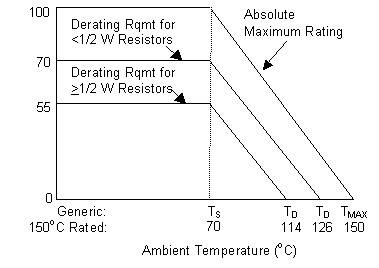
Figure 1. Derating Requirement for Fixed Value, Film, Chip
Resistor
Application Information
Reliability: This is a highly reliable
resistor provided it is properly handled and properly mounted to substrate
material. It is prone to cyclic fatigue failure of solder joints when the design
does not adequately account for thermal expansion mismatch or when the
temperature of the resistor increases rapidly in comparison to the underlying
board material. Chip stacking is not
recommended. The film side of the resistor should be mounted on the up side to
reduce thermal stressing. Past reliability problems occurred due to tin plated
finishes causing whisker growth. Tin plated finishes are prohibited by the
Military performance specification but may be present on commercial
styles.
Tolerance/Aging: Normal purchased tolerance is
±5% and is typically available in
tolerances between 0.1 and 10%. ESD sensitivity must be taken into account when
handling the resistor, especially for tight tolerance values. Improper ESD
handling may result in the resistor exceeding its stated tolerance, particularly
those with small size, high sheet resistivity values and tight tolerances. Tight
tolerance resistors (< ±0.5%) are of the thin film
variety.
Frequency
Characteristics:
The high frequency characteristics of this resistor are considered one of the
best of any resistor style, although dependent on amount and pattern of trimming
of the resistive element. Thick film resistors have better high frequency and
pulse handling capabilities over thin films. Maximum noise level is typically
not controlled by specification.
Military Considerations
Figure 1 specifies derating temperature requirements for resistors conforming to
MIL-PRF-55342 (Style RM).
Resistors Fixed, Film (General Purpose And Precision)
This is
a small sized, semi-precision style resistor with a cylindrical body. It has the best high frequency performance
characteristics of any resistor styles, but is also ESD sensitive. Recommended use is in applications where high
stability and close resistance tolerance is required.
Construction
This resistor is constructed by vaporizing a carbon, metal, or thick
cermet film onto a ceramic or glass substrate. The element is spiraled to
increase available resistance.
Resistance is calibrated through trimming of a helical grove in the
resistive layer. Terminations are usually a tinned copper wire welded to
nickel-plated steel end caps. The body is coated to prevent moisture and
contaminate penetration, but coating varies with manufacturer and quality
level.
Derating
Power: For MIL-PRF-39017 Styles RLR05 and RLR07, and
for MIL-PRF-55182 Styles RNC50 and RNC55, derate power to 65% of maximum full
rated power below TS. Above
TS, linearly derate to TMAX as shown in Figure 2. For high voltage, high resistance value
applications, do not allow power dissipation to exceed P = 0.65*V2
continuous / R, where V continuous is the maximum
continuous working voltage.
For all other styles (including commercial), derate
power to 55% of maximum full rated power below TS.
Above TS,
linearly derate to TMAX as shown in Figure 2. For high voltage, high resistance value
applications, do not allow power dissipation to exceed P =
0.55*V2 continuous / R, where V
continuous is the maximum continuous working voltage.
Voltage: Under pulse conditions, perform
additional derating of voltage to 70% of the dielectric breakdown voltage or the
maximum short-term overload voltage, whichever is less.

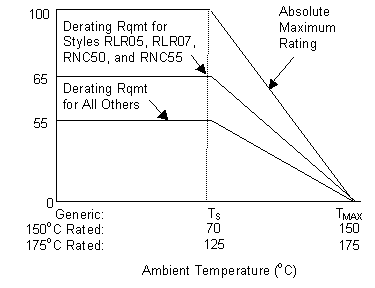
Figure 2. Derating Requirement for Fixed Value, Film Resistor,
General Purpose and Precision
Application Information
Reliability: The reliability of this
style is considered better than that of other resistor styles. The primary
failure mode is resistance drift, which is often caused by cracking of the
external coating layer and moisture permeation into the resistive element. This
resistor is ESD sensitive. Heat dissipation is accomplished through the
leads.
Tolerance/Aging: Normal purchased tolerance is
±5%. Resistance is accurately maintained over a
broad range of temperatures and for long periods. Designs should tolerate an
additional ±2% shift in resistance value
during component life. Resistance-temperature characteristics are low for thick
film styles (<±500 ppm/oC) and very
low for metal film styles (<±25 ppm/oC). Permanent changes in resistance are possible
when operating in the presence of extreme temperatures.
Frequency
Characteristics: Higher resistance values
generally have a greater effect on frequency due to the increased number of
spiral cuts in the resistive element. Operation above 10MHz can produce
inductive effects on spiral-cut styles.
Effective DC resistance remains reasonably constant up to 400MHz for all
others. Skin effects are generally
negligible below 10 MHz due to the relatively thin film thickness.
Special
Considerations:
In the construction of film resistors, the trimming of helical grooves tends to
be optimized for performance when constructing Military grades and throughput
for commercial grades. This means the number and range of grooves may be less
for a Military grade than for a commercial grade resistor with the same values,
thus giving better frequency performance for the Military grade resistor.
Military Considerations
Figure 2 specifies derating temperature requirements for resistors conforming to
MIL-PRF-39017 (Style RLR) and MIL-PRF-55182 (Style RNR, RNC, RNN).
Resistors, Fixed,
Film, Power
This is a film style resistor capable of withstanding high power
operation for extended periods.
Construction
This
resistor is constructed by depositing a metal film on a high-quality ceramic
substrate. The element is spiraled to
increase available resistance.
Resistance is calibrated through trimming of the resistive element. The
resistor is coated to provide environmental protection.
Derating
Power:
Derate power to 55% of maximum full rated power below TS. Above TS, linearly derate to
TMAX as shown in Figure 3 where TD
=
TS+0.55(TMAX-TS).

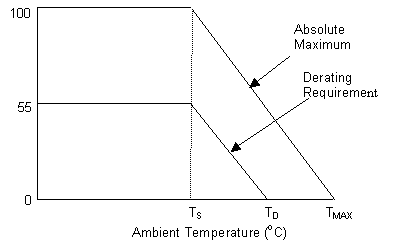
Figure 3. Derating Requirement for Fixed Value, Film, Power
Resistor
Application Information
Reliability: This resistor style has comparable
reliability to fixed wirewound styles. It is capable of withstanding high
humidity, high hotspot temperature, and continuous operation at high
wattage.
Tolerance/Aging: Not available with tight
tolerances.
Frequency
Characteristics: High frequency characteristics
are considered good, but are dependent on the number and type of helical grooves
cut into the film to increase the resistance value.
Military Considerations
Not
Applicable.
Resistors,
Fixed, Film, Network
This
is a resistor with properties similar to that of fixed film resistors. The primary features are small size and
easily assembled.
Construction
Construction
is characterized by vaporized metal deposited film or high temperature fired
printed metal and glass combination paste on a ceramic substrate. The resistance element is calibrated through
trimming of the resistive element. The
insulative enclosure normally consists of epoxy or silicone.
Derating
Power:
Derate power to 55% of maximum full rated power below TS.
Above TS,
linearly derate to TD as shown in Figure 4, where TD
= TS+0.55(TMAX-TS).
For high voltage, high resistance value applications, do not allow power
dissipation to exceed P = 0.55*V2 continuous / R,
where V continuous is the maximum continuous working
voltage.
Voltage: Under pulse conditions, perform
additional derating of voltage to 70% of the dielectric breakdown voltage or the
maximum short-term overload voltage, whichever is less.

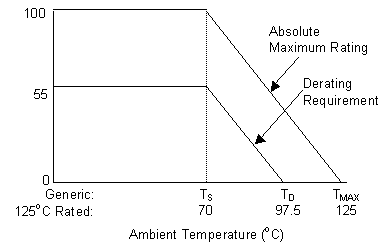
Figure 4. Derating Requirement for Fixed Value, Film, Network
Resistor
Application Information
Reliability: Reliability of this resistor
is considered better than that of other resistor styles. The primary failure mode is resistance drift,
and the secondary mode is open circuit. This resistor is ESD sensitive. Heat
dissipation is accomplished through the leads.
Tolerance/Aging: Resistance is accurately
maintained over a broad range of temperatures and for long periods. Designs
should tolerate an additional ±2% shift in resistance value
during component life. Resistance-temperature characteristics are low for thick
film styles (<±500 ppm/oC) and very
low for metal film styles (<±25 ppm/oC). A
permanent change in resistance is possible when operating in the presence of
extreme temperatures.
Frequency
Characteristics:
Higher resistance values generally have a greater effect on frequency. Operation
above 100MHz can produce inductive effects on spiral-cut styles. Effective DC resistance remains reasonably
constant up to 400MHz for all others.
Military Considerations
specifies derating temperature requirements for resistors conforming to
MIL-PRF-83401 (Style RZ).
Resistors,
Fixed, Wirewound (Accurate)
This is a high stability, high accuracy resistor with a large size, mass,
and cost. It demonstrates relatively poor high frequency performance
characteristics due to the inductive effects of helical wound wire.
Construction
This
resistor is constructed by winding a precisely measured length of known ohmic
value wire around a bobbin or core (usually ceramic). Internal elements are protected by a coating
and are enclosed in a moisture-resistant insulating material. Construction materials of military and
commercial styles are similar, but Military grades receive additional screening
and are rated more conservatively. Type of ohmic value wire used varies and is
dependent upon resistance value and power dissipation requirements.
Derating
Power: For resistor styles conforming to
MIL-R-39005 and MIL-R-93, derate power to 70% of maximum full rated power and
remain below an ambient temperature of TS, as shown in Figure 5.
For all other styles (including commercial), derate power to 50% of maximum full
rated power and remain below an ambient temperature of TS, as shown
in Figure 5. For high voltage, high resistance value applications, do not allow
power dissipation to exceed P = 0.70*V2 continuous / R,
where V continuous is the maximum continuous working voltage.
Additional derating is recommended for applications demanding tight resistance
value tolerances (»0.1%).
Voltage:
Under pulse conditions, perform additional derating of voltage to 70% of the
dielectric breakdown voltage or the maximum short-term overload voltage,
whichever is less.

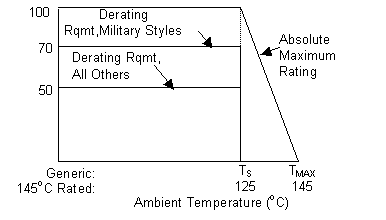
Figure 5. Derating Requirement for Fixed Value, Wirewound
Resistor (Accurate)
Application Information
Reliability: This resistor style has
generally comparable (slightly higher) reliability to fixed composition and film
styles. It is sensitive to vibration and shock damage due to larger size and
mass. The primary mode of heat
dissipation is through resistor leads.
Tolerance/Aging: Exhibits the highest accuracy
of any resistor style. It is available with tolerances as low as 0.01%, although
extreme care must be taken during design and manufacturing process to retain
tolerance at this level.
Frequency
Characteristics: High frequency operation is
generally not recommended, although inductive effects can be minimized by
special winding techniques (i.e., reverse pi-winding, bifilar winding, and
winding on a flat card). Operation above 50kHz generally produces inductive and
intrawinding capacitive effects.
Military Considerations
Figure 5 specifies derating temperature requirements for resistors conforming
to MIL-PRF-39005 (Style RBR). Style RBR
replaces Style RB (MIL-R-93).
Resistors, Fixed,
Wirewound, Power
This is a resistor capable of handling high power and is intended for low
frequency applications. Its two primary
drawbacks are large size and weight, as compared to other resistor styles.
Construction
A fixed length of wire or ribbon of known ohmic value
is wound around a ceramic core and terminated with axial leads. It is similar to
other wirewounds, but specifically designed to handle higher load
currents.
Derating
Power: Derate power to 60% of maximum
full rated power below TS.
Above TS,
linearly derate to TD 10% rated wattage as shown Figure 6, where TD =
TS+0.60(TMAX-TS). For high voltage, high
resistance value applications, do not allow power dissipation to exceed P =
0.60*V2 continuous / R, where V
continuous is the maximum continuous working voltage. Do not use
above a surface (case) temperature of 200oC.
Voltage: Under pulse conditions, perform
additional derating of voltage to 70% of the dielectric breakdown voltage or the
maximum short-term overload voltage, whichever is less.
For resistance values higher than those given in
MIL-R-39007, derate working voltage to  , where R is the maximum MIL-PRF-39007 resistance value for the given
style, and P is the derated power at the applicable temperature.
, where R is the maximum MIL-PRF-39007 resistance value for the given
style, and P is the derated power at the applicable temperature.

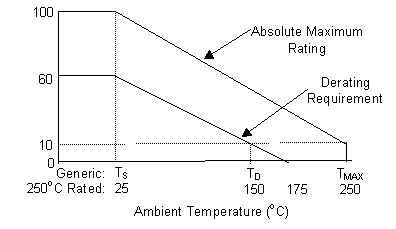
Figure 6. Derating Requirement for Fixed Value, Wirewound, Power
Resistor
Application Information
Reliability: For this resistor, reliability
is generally the lowest of all fixed resistor styles, but failure rates are
highly variable between manufacturers. Special mounting considerations need be
taken into account in high vibration environments due to its large size. Heat
dissipation is accomplished by both radiation and conduction through the lead
materials, with the conduction component highly dependent on thermal
conductivity of the resistor core.
Tolerance/Aging: This resistor style is generally
not supplied with close tolerances and not intended for tight tolerance
applications. Regardless of purchased tolerance, design should tolerate a +1%
shift in resistance to assure long life. Temperature coefficients are typically
tightly controlled.
Frequency
Characteristics: While this resistor style is not generally
acceptable for high frequency applications, non-inductively wound versions are
available and offer acceptable performance at intermediate frequency
ranges. Consult the specification/data
sheets for specific performance with respect to
frequency.
Special
Considerations:
Coating materials used during the fabrication process may be subject to
outgassing of volatile materials when operating at surface temperatures above
200oC.
Military Considerations
Figure 6 specifies derating temperature requirements for resistors conforming to
MIL-PRF-39007 (Style RWR). RWR80 is
recommended over RWR70 in high power applications due to higher thermal
conducting core materials.
Resistors, Fixed,
Wirewound, Power, Chassis Mounted
This
is a high power, low frequency resistor style, intended to be mounted on a heat
sink to dissipate power. It exhibits the highest power dissipation capability of
any resistor style, but with large size and mass.
Construction
This
resistor style features a measured length of known resistance wire or ribbon
wound around a ceramic core or tube, enclosed in a finned aluminum housing to
aid in heat dissipation.
Derating
Power:
Derate power to 50% of maximum full rated power below TS.
Above TS,
linearly derate to TD as shown Figure 7, where TD =
TS+0.50(TMAX-TS). For high voltage, high
resistance value applications, do not allow power dissipation to exceed P =
0.50*V2 continuous / R, where V
continuous is the maximum continuous working
voltage.
Voltage: Under pulse conditions, perform
additional derating to 70% of the dielectric withstanding voltage, or the
maximum short-term overload voltage, whichever is less.

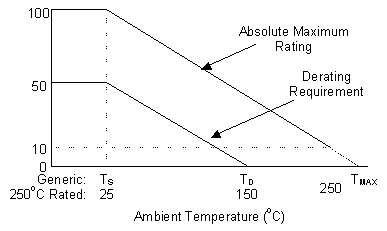
Figure 7. Derating Requirement for Fixed Value, Wirewound, Power,
Chassis Mounted Resistor
Application Information
Reliability: High dissipation power causes
low reliability. A heat sink should be used to dissipate power.
Tolerance/Aging: Stability over temperature is
very good. Resistance tolerance is normally ±1%, but designs should be capable
of tolerating an additional ±1.5% shift in resistance value
over lifetime.
Frequency
Characteristics:
Not intended for high frequency applications.
Military
Considerations
specifies
derating temperature requirements for resistors conforming to MIL-PRF-39009
(Style RER).
Resistors,
Variable, Wirewound, General Purpose
This resistor is a low precision variable resistor intended for matching,
balancing, and adjusting circuit variables.
Construction
An element of a continuous length wire is wound around a
rectangular or arch shaped core, with a sliding contact traversing the
element.
Derating
Power:
Derate power to 55% of maximum full rated power below TS.
Above TS,
linearly derate to TD, as shown Figure 8, where TD =
TS+0.55(TMAX-TS).
Dielectric Breakdown:
N/A.

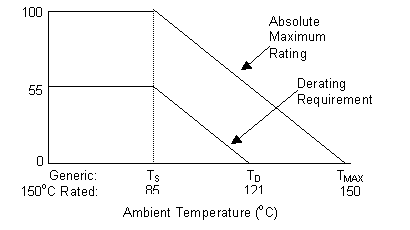
Figure 8. Derating Requirement for Variable, Wirewound (General
Purpose) Resistor
Application Information
Reliability: Reliability is best among
the variable resistors, but substantially lower than equivalent fixed value
styles. Lack of a protective seal makes the resistor sensitive to moisture and
contamination (flux, cleaning solvents, etc.) intrusion between the winding
elements. Lubrication oil will cause dust or wear particles to concentrate
further. A wiper arm locking mechanism is necessary to assure long term
reliability, particularly in high vibration/shock applications. Mechanical
support should not be done by relying on resistor leads, and brackets may be
necessary in some applications. Principal failure mode is open circuit.
Tolerance/Aging: Tolerance normally specified at
±5%, although designs should be
able to tolerate ±7% over lifetime. The user should account for change in
resistance due to resistance-temperature effects.
Frequency
Characteristics:
Not recommended for high frequency applications. Noise can be generated while
being adjusted due to stepping of contact from wire to wire.
Special
Considerations:
Heat dissipation is accomplished through a combination of radiation and
conduction through the component leads. When only a portion of the resistance
element is engaged, the wattage is reduced in directly the same proportion as
the resistance.
Military Considerations
Figure 8 specifies temperature-derating requirements for resistors conforming to
MIL-PRF-39015 (Style RTR).
Resistors,
Variable, Wirewound, Precision And
Semi-Precision
This
is a precision variable resistor used for servo-mounted applications requiring
precise electrical and mechanical output and performance. A heat sink should be used to aid in power
dissipation. The output is linear with respect to wiper arm position.
Construction
A wire of known ohmic value is wound around a rectangular or
arch shaped core, with a sliding contact traversing the element. The element is
enclosed in an environmentally resistant housing and the wiper arm is designed
to assure continuous contact during adjustment.
Derating
Power: Derate power to 55% of maximum
full rated power below TS.
Above TS, linearly derate to TD as shown in Figure 9, where, TD
= TS+0.55(TMAX-TS). Ensure power rating will be sufficient to
handle the higher current produced when the resistance is reduced. When only a portion of the resistance element
is engaged, the wattage is reduced in directly the same proportion as the
resistance.

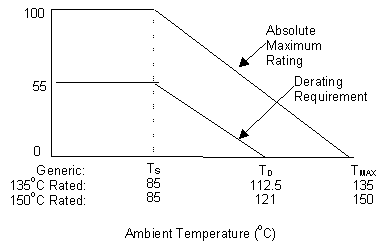
Figure 9. Derating Requirement for Variable, Wirewound, Precision
and Semi-Precision, Resistor
Application Information
Reliability: Reliability is considered good
in comparison to other variable wirewound styles. A wiper arm locking mechanism is necessary to
assure long term reliability, particularly in high vibration/shock
environments. The principal failure mode
of this resistor style is open circuit.
The principle mode of heat dissipation is accomplished through conduction
to a heat sink.
Tolerance/Aging: Overall stability is considered
good, but in tight tolerance applications the user should account for a change
in resistance due to resistance-temperature characteristic.
Frequency
Characteristics:
This resistor is not suitable for high frequency or pulse applications. Noise performance is better than other
wirewound resistor styles due to continuous contact feature.
Military Considerations
Figure 9 specifies temperature derating requirements for resistors
conforming to MIL-PRF-12934 (Style RR) and MIL-PRF-39002 (Style RK). Ambient temperature ratings
of Military resistors assume the resistor will be mounted on a 4-inch square, ¼
inch thick aluminum alloy panel.
Resistors, Variable, Wirewound, Power
This
is a high power variable resistor, intended for high voltage, high power
applications such as motor speed controls, lamp dimming, heater controls, etc.
It is available only in relatively low resistance values (typically
<5KW).
It is designed for mounted on a heat sink.
Construction
A continuous length wire of known ohmic value is wound around
a central core, with a sliding contact traversing the element. The wire and core
are usually bonded to the base structure by a vitreous enamel. The structure is
left unenclosed.
Derating
Power: Derate power to 55% of maximum
full rated power below TS.
Above TS, linearly derate to TD, as shown in Figure 10, where TD
= TS+0.55(TMAX-TS), or limit maximum
operating temperature to 110oC, whichever is less. When only a portion of the resistance element
is engaged, the wattage is reduced in directly the same proportion as the
resistance.
Dielectric
Breakdown:
N/A.

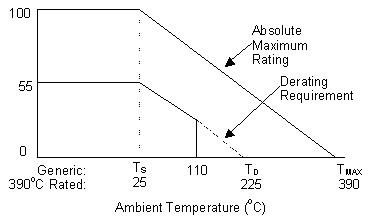
Figure 10. Derating Requirement for Variable, Wirewound, Power
Resistor
Application Information
Heat Dissipation: The primary mode of heat
dissipation is accomplished through radiation or conduction to a heat sink,
depending on mounting. Ensure power rating will be sufficient to handle the
higher current produced when the resistance is reduced.
Reliability: Exhibits very poor
reliability, lowest of any resistor style.
Tolerance/Aging: Consult manufacturer’s
specifications.
Noise:
This style is not suitable for high frequency applications.
Military Considerations
specifies derating temperature requirements for resistors
conforming to MIL-R-22 (Style RP).
Ambient power ratings of MIL-R-22 styles assume mounting on a 12-inch
square, 0.063-inch thick metal plate heat sink.
Resistors, Variable, Non-Wirewound,
Composition
This resistor is intended for applications where
stability and precision are not important and a constant resistance value does
not need to be locked into place. Characteristics are similar to variable film
resistors, but with lower cost, reliability, and rated operating
temperatures.
Construction
This one-piece molded style contains the resistance
material, terminals, faceplate, and busing. Composition film style is a film of
carbon resistance material painted onto the surface of a prepared
form.
Derating
Power: Derate power to 50% of maximum
full rated power below TS.
Above TS, linearly derate to TD as shown in Figure 11, where TD = TS+0.50(TMAX-TS). When only a
portion of the resistance element is engaged, the wattage is reduced in directly
the same proportion as the resistance.
Dielectric Breakdown:
N/A.

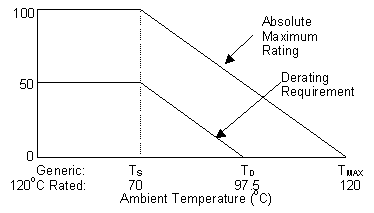
Figure 11. Derating Requirement for Variable,
Non-Wirewound, Composition Resistor, Military Style RV
Application Information
Reliability: This style is generally more
susceptible to wear than wirewound styles because composition element tends to
wear after extended use, leaving behind particles to permeate the
mechanism.
Tolerance/Aging: This resistor style exhibits a
large change in resistance value over time and temperature. The initial
tolerance is ±10% for most styles, and designs
should be capable of withstanding up to ±20% tolerance over intended
life.
Frequency
Considerations:
The noise level is relatively high, although it tends to decrease with age. This
resistor is not intended for high frequency applications.
Special
Considerations:
Power ratings may assume mounting to a heat sink. For potentiometer
applications, consider both load and bleeder current in calculating power
dissipation.
Military Considerations
Figure 11 specifies derating temperature requirements for
resistors conforming to MIL-PRF-94 (Style RV).
Ambient power ratings for MIL-R-94 style assumes mounting on a 4 inch
square, 16 gage steel plate heat sink.
Resistors,
Variable, Non-wirewound, Film
This resistor is intended for rheostat or potentiometer applications
where high precision is not required and a constant resistance value does not
need to be locked in place.
Construction
The resistive element is a metal-ceramic film fused onto a
ceramic substrate (usually in the form of an arch) and housed in an enclosure to
provide environmental and mechanical protection.
Derating
Power:
Derate power to 50% of maximum full rated power below TS. Above TS, linearly derate to
TD, where TD
= TS+0.50(TMAX-TS), as shown in Figure 12. Apply additional derating if the entire element is not
used.

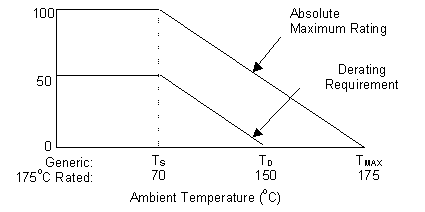
Figure 12. Derating Requirement for Variable,
Non-Wirewound, Film Resistor
Application Information
Reliability: Reliability for this style
is considered high in comparison to other variable styles. This resistor is
typically used in similar applications as variable composition styles, but where
increased reliability is required. The resistor is good at withstanding
acceleration, shock, and high frequency acceleration.
Tolerance/Aging: Consult manufacturer’s
specifications.
Frequency
Considerations:
The noise level is high, but generally is less than other variable
styles.
Special
Considerations:
Power ratings may assume mounting to a heat sink. One must ensure the power
rating will be sufficient to handle the higher current produced when the
resistance is reduced.
Military Considerations
Figure 12 specifies derating temperature requirements for
resistors conforming to MIL-R-23285 (Style RVC). Ambient power ratings of
MIL-R-23285 styles assume mounting on a 4 inch square, 16 gage steel plate heat
sink.
Resistors, Variable, Precision
This
is a high precision variable resistor intended for servo mounted applications
requiring precise electrical and mechanical output and performance. The output
is linear with respect to the angular position of the operating shaft.
Construction
The resistive element usually consists of carbon, cermet, or
conductive plastic deposited on a plastic insulating base. Element is enclosed
in an environmentally protective housing.
Derating
Power:
Derate power to 55% of maximum full rated power below TS. Above TS, linearly derate to
TD as shown in Figure 13, where
TD
= TS+0.55(TMAX-TS). Apply additional
derating if the entire resistive element is not used.


Figure 13. Derating Requirement for Variable,
Non-Wirewound Precision Resistor
Application Information
Reliability: Reliability is considered
marginal among variable resistor styles. The primary failure mode is resistance
drift, with a secondary failure mode of open circuit.
Tolerance/Aging: This resistor offers increased
accuracy over equivalent value composition or film variable styles.
Frequency
Considerations:
The noise is lower than wirewound styles because wiper arm maintains continuous
contact through entire travel.
Special
Considerations:
Maximum power handling specifications may assume mounting on a heat sink.
Military Considerations
specifies derating temperature requirements for resistors
conforming to MIL-PRF-39023 (Style RQ). Ambient power ratings for MIL-R-39023
style assumes mounting on a 4 inch square, 16 gage steel plate heat sink.
Note: This table is only intended to serve as a
convenient summary of the derating requirements for resistors. Figure 1-13 provides more precise information in graphical form.
Archived Pages:
Original